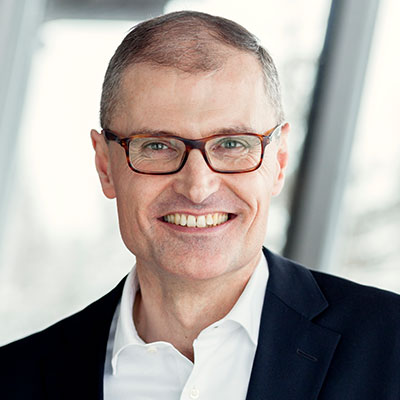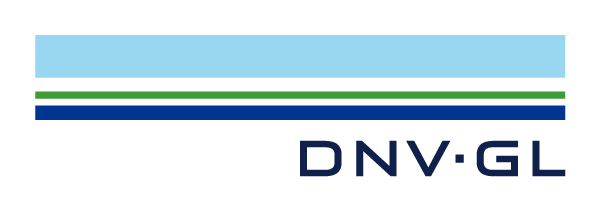4 September 2018
Interview with Ditlev Engel, CEO of DNV GL – Energy

Can you tell us a little bit about DNV GL – Energy and your history with DNV GL – Energy?
We are a global quality assurance and risk management company, delivering technical advisory, energy management, test and certification services to our customers in the energy sector.
Our expertise spans onshore and offshore wind power, solar, conventional generation, transmission and distribution, smart grids, and sustainable energy use, as well as energy markets and regulations. Our experts support customers around the globe in more than 100 countries. We have over 90 years of experience in the power industry and have been championing the development and expansion of the wind industry for over 30 years.
Personally, I have been with the company for over two years and have been working in the renewables industry for thirteen years.
DNV GL – Energy is one of the world’s leading authorities on the energy transition. Regarding the energy transition, what are the most important facts that industry stakeholders need to know about the current state-of-play?
In our upcoming Energy Transition Outlook report, we see profound change ahead, both short- and long-term. This relates to energy policies, emerging energy sources and technologies and the pricing of existing and new technologies.
We foresee substantial expansion of the energy infrastructure until 2050; with massive growth of the world’s electricity transmission and distribution systems due to continuing rapid electrification. The surge in global electricity production will be powered by renewable sources; wind and solar are set to meet most of the electricity demand.
In turn, this will require major expansion of electricity transmission and distribution systems, both in the length and capacity of transmission lines.
DNV GL – Energy will be a significant presence at this year’s Global Wind Summit in Hamburg. Can you tell us about why this event is so significant?
Wind energy plays a vital role in the new cleaner energy mix, already now and in the future. To ensure the ambitious targets of the wind industry are being met, it is vital that industry stakeholders come together for this knowledge and idea exchange to move the industry forward. The Global Wind Summit in Hamburg provides the ideal opportunity to facilitate this knowledge transfer, where it’s easy to meet with stakeholders throughout the entire wind lifecycle and learn about cutting edge concepts.
The Global Wind Summit leads European governments, businesses and consumers into a new energy age where wind supports clean energy development and generation.
The theme at the Global Wind Summit focuses on how wind energy is ‘breaking new ground.’ What are the most significant changes DNV GL – Energy have seen in the wind sector in recent years?
The zero-bid subsidies for recent offshore wind projects we have seen over the last 18 months have certainly been a game changer for the industry, proving that wind energy is a competitive form of energy generation. After years of hard work, zero-subsidy bids are evidence that offshore wind power has the potential to compete in a free, open market. Now we see a future for offshore wind where it will be more widely accepted, as it could be paid for purely by selling generated electricity. So, the offshore wind industry should be appropriately proud of its accomplishments. But challenges still lie ahead, as business models need to be proven to ensure that the investment community believes in the economic sustainability of zero-subsidy projects.
Also, the opening of new offshore markets in Asia and U.S. are some exciting developments that demonstrate that offshore wind will become a truly global industry. The increasing confidence in this technology beyond the ‘home’ European market demonstrates its significance in the energy transition, as we see a greater focus on renewables. The knowledge learnt over many years of development throughout Europe will help to reduce the time and expertise needed to build new projects in the USA, Taiwan, China, Japan and Vietnam. This knowledge will also equip developers in these markets to mitigate specific regional risks, including typhoons, hurricanes, earthquakes and softer seabed conditions, which all have consequences for the choice of turbine technology and foundations.
Looking at onshore and offshore wind, I believe that digitalisation will play a major role in the years to come. Data is already a very powerful resource and wind assets churn out huge quantities of data every day. By turning this data into intelligence, it’s possible to accurately monitor assets in real-time to boost venue and revenue, as well as reduce costs. For example, our digital twin, WindGEMINI, analyses existing SCADA data and leverages innovative algorithms and physics-based simulation models to model different aspects of an operating wind turbine, including fatigue life estimator, structural integrity and power curve performance watchdog. I see further exploration into artificial intelligence and its uses as the world becomes more interconnected and focused on digital systems.
I am also impressed by the technological advancements we have seen in recent years. Looking at the growing size of megawatt turbines, I am excited to see how far we can go in terms of 10 MW+ turbine types.
You have a wealth of expertise in green growth and are known for pushing the energy transition to the next level. What must the wind industry do now – politically, technologically, etc. – to ensure it plays a leading role in the greener energy mix of tomorrow?
I believe it is vital that the political and regulatory framework is moving at the same pace as the rapid technological advancements we are currently witnessing. This – not cost, not technology – will be decisive in determining how fast a clean and sustainable energy future will become a reality.
Today it is not the technology which is the bottleneck, but the lack of regulatory clarity. The investments needed in the energy systems in many markets today are huge and very capital-intensive. The only way to get those investments secured is by substantial private contribution. But for that to happen, a decent level of stable return of the initial investment is needed. This is where a public and private accord needs to be established – and in many places, this is also happening.
This is a typical issue for infrastructure investments in general and for energy investment in particular. The good news is: it is indeed possible; the technologies are here; and private capital is willing to engage, provided the regulatory clarity and stability will be delivered.
In new markets where advanced renewables, such as offshore wind, are not established and applied, it helps when experienced players share their knowledge, to ensure that mistakes from the early days of the offshore wind industry are not being repeated.
This already happens in Taiwan today. Such an approach of experienced players introducing new technologies and business models seems to be an effective way of reducing project and investment risks. The wind industry could apply this approach even more for both onshore and offshore wind, and also with the new storage and hybrid power plant solutions which will combine both wind, solar and battery storage.
Concerning the energy transition: what changes do you hope for over the coming ten years? And what role do you see DNV GL – Energy playing in this process?
As mentioned, we are foreseeing major expansions in the grid infrastructure and renewables. At the same time we have seen in our Energy Transition Outlook that we are still not on the path to reach the 2°C target in the Paris agreement, so it is our aspirations together with our present and future customers to work closely together to accelerate the energy transition as fast as we possibly can by using current and new technologies across industries and countries for the benefit of all of us. This has to be done without compromising on safety and reliability
We do this through the testing of new power equipment, certification of new turbine types, writing of international guidelines for new technologies, such as floating offshore wind, and development of digital twin technologies for wind turbines, such as WindGEMINI.
The future is looking bright for the transition towards a clean and sustainable energy industry and we are proud to shape the energy landscape of tomorrow with our customers and ensure a safer, smarter and greener future for all inhabitants around the globe.


